Garden Sail Ideas: Creative Ways to Shade Your Outdoor Space
Creating a comfortable and stylish outdoor space can be a simple yet impactful way to enhance your garden. Garden shade sails are a fantastic solution to provide shelter from the sun while adding a modern touch to your space. They come in various designs and colors, making it easy to find one that fits your aesthetic and needs.
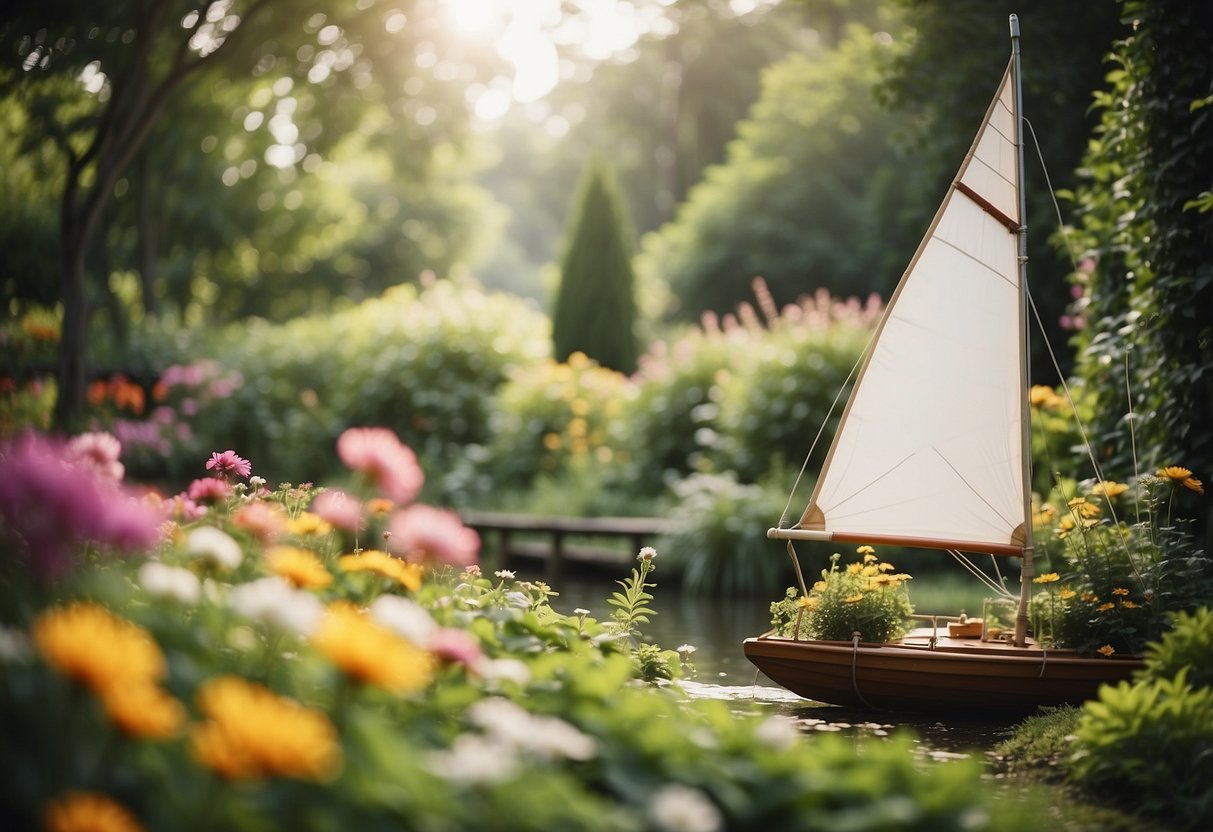
Why should you consider garden sails for your outdoor area? They offer a versatile and attractive way to create shaded areas, perfect for relaxing or entertaining guests. With different shapes, sizes, and colors available, you can customize your shade solution to fit any garden style. Whether you have a small patio or a large backyard, there’s a garden sail option that can work for you.
1) Triangular Shade Sail
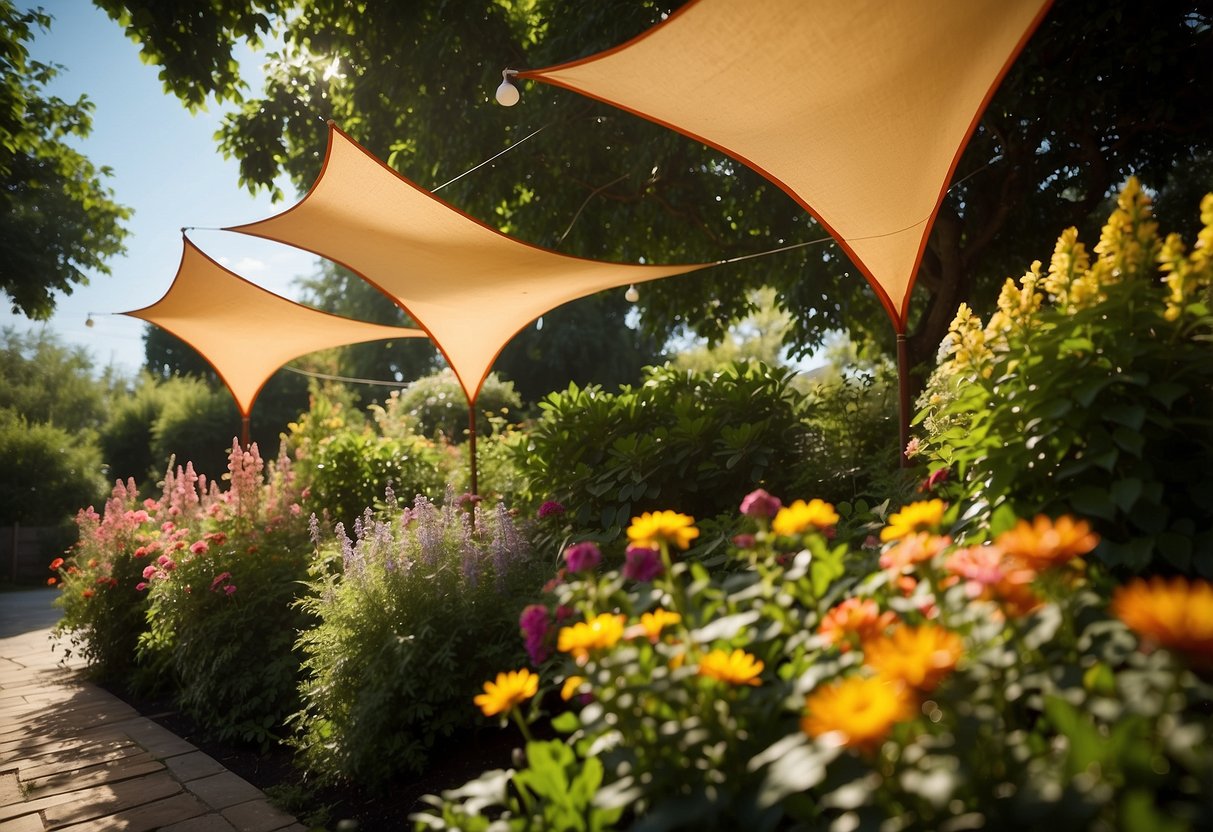
Triangular shade sails are a popular choice for many gardens. They add a modern touch and are quite versatile. You’ll find them easy to set up and adjust.
These sails work well over small areas like a patio or a cozy corner. They can be combined with other shapes to create unique designs.
When selecting a triangular shade sail, think about the color and size. Choose a durable material to ensure it lasts longer. Be sure to tighten the sail properly for a neat look. You can find tips and ideas on how to use and install them at The Garden Glove.
2) Rectangular Pergola Cover

A rectangular pergola cover is a great way to enhance your garden. It provides ample shade and adds a stylish touch to your outdoor space.
You can use materials like canvas or other durable fabrics to make this cover. Attach the fabric tightly over the beams of the pergola for a clean look.
Consider adding a canopy to shield your patio from both sun and rain. This will keep your gathering spot comfortable in any weather.
3) Sun Shade Sail Poles

Choosing the right poles is crucial for your shade sail setup. You can use materials like wood or metal for your poles. Each has its pros and cons.
Wooden poles, such as 4x4s or 6x6s, offer a natural look. They can be paired with turnbuckles for easy tension adjustments.
Metal poles, like steel, provide increased durability. These often work well in concrete bases for added stability.
Remember to select sturdy poles to handle the tension and elements. Proper pole placement ensures your shade sail stays secure and provides the desired shade.
4) Retractable Patio Awning
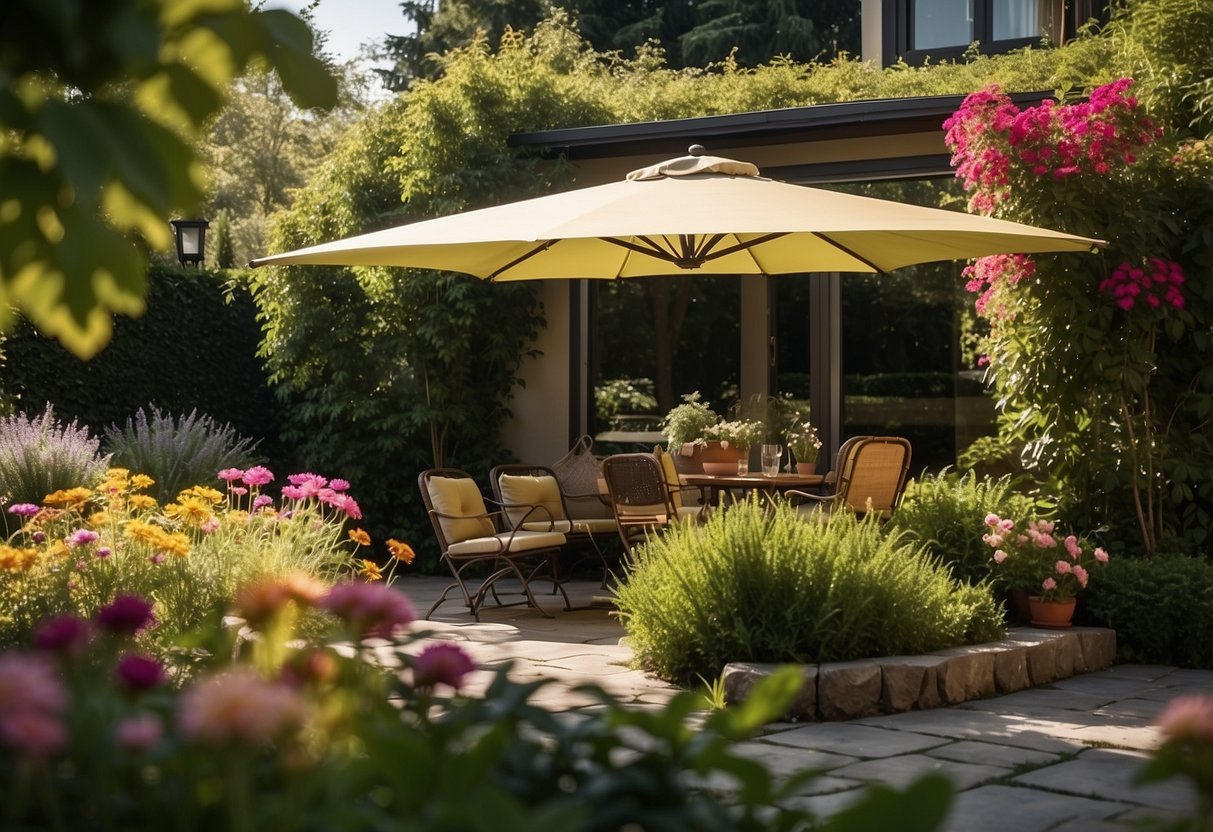
A great addition to your garden is a retractable patio awning. These awnings give you flexible shade and style. You can extend them when the sun is too bright and retract them when you want more sunlight.
Retractable awnings come in various materials like UV-resistant fabric and lightweight aluminum frames. They are durable and easy to maintain. Because they are versatile, you can find a design that matches your garden perfectly.
Mix and match colors to suit your outdoor space. Adding cozy seating and string lights can create a warm, inviting atmosphere. If you want to explore different designs, consider checking out some retractable options.
5) Customizable Sun Shade

Customizable sun shades let you choose the design that best fits your garden. You can pick the color, size, and shape that work well with your outdoor space.
Whether you want bright, eye-catching colors or more muted, natural tones, there’s a sun shade for you.
These shades can be designed to fit any patio, deck, or backyard setup, making them a versatile option for cooling your space. Check out innovative design ideas to get inspired.
6) Sail Brackets and Hardware
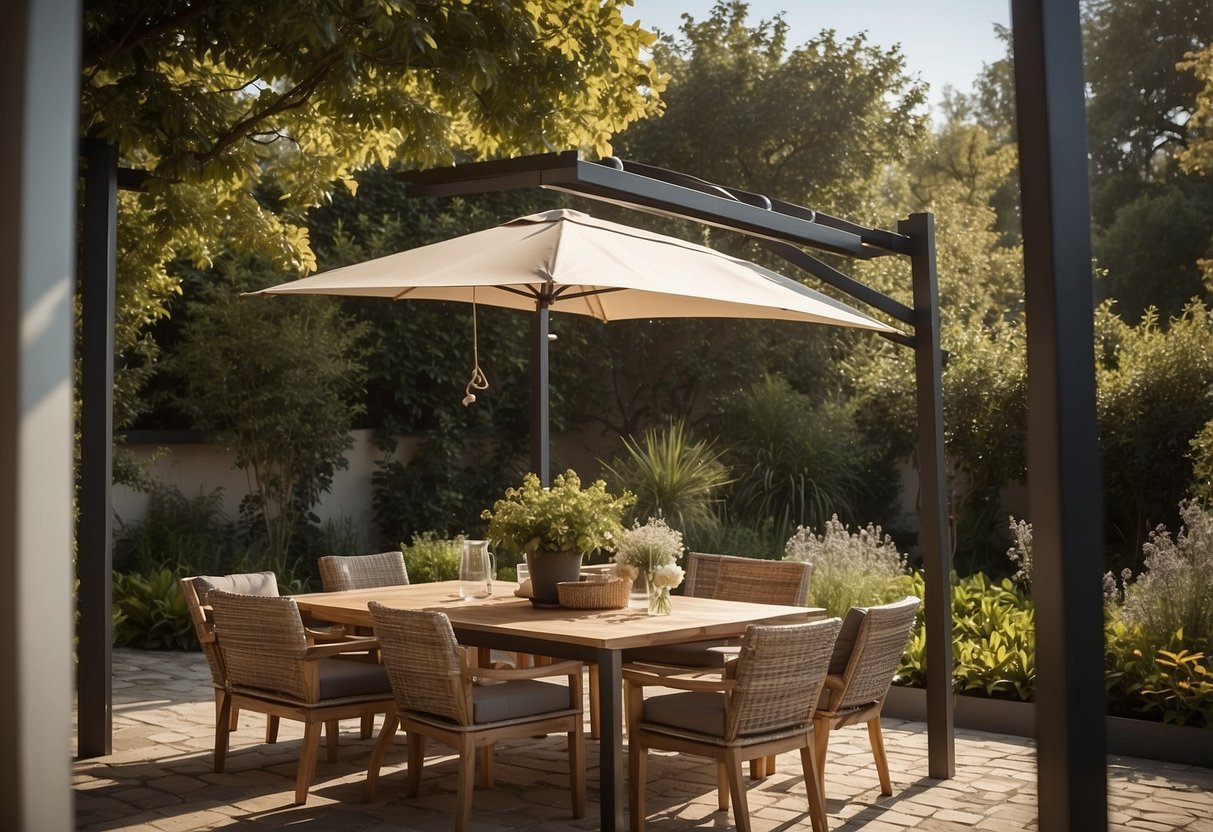
When setting up a shade sail, the right brackets and hardware are key.
You’ll need strong anchor points, like wall plates, eye bolts, or pad eyes. These help keep your sail secure and stable.
Don’t forget turnbuckles. They allow you to adjust the tension easily. Plus, D-shackles can connect the sail to the brackets securely.
7) Waterproof Canopy Sails

Waterproof canopy sails are fantastic for keeping your outdoor space dry during rainy days. They are perfect for protecting your patio furniture and outdoor gatherings.
These sails come in various shapes and colors, so you can find something that fits your style. They are also durable, able to withstand different weather conditions.
You can create a cozy, protected area in your garden by installing a waterproof canopy sail. They’re practical and add a stylish touch to any outdoor space. Check options like the Coolaroo Ready-to-Hang Shade Sail for a reliable choice.
8) Anti-UV Shade Fabric
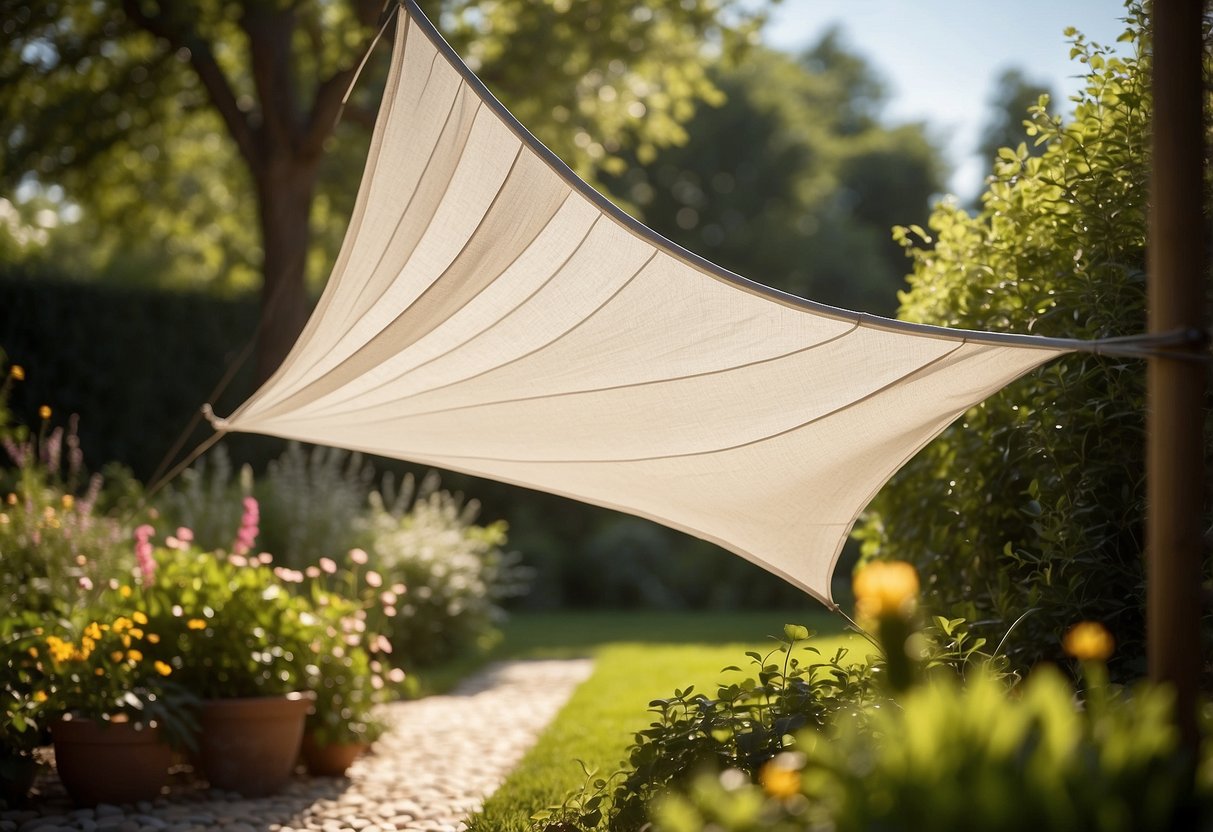
Using an anti-UV shade fabric in your garden is a great way to protect yourself from the sun’s harmful rays. These fabrics can block up to 85% of UV rays, making your outdoor space safer and more comfortable.
You can find options in various colors and sizes to match your garden’s aesthetics. Try choosing a color that blends well with your surroundings, like a smoky Montecito Brown finish that matches neutral or vibrant furnishings.
Anti-UV shade fabrics are made from durable materials like polyethylene. These fabrics are designed to withstand weather conditions, so you won’t have to replace them frequently.
9) Outdoor Patio Shades

Outdoor patio shades are a great way to enjoy your patio without too much sun. You can use shade sails for a stylish and functional look. They come in various colors and sizes that fit any space.
Many people prefer using shade sails because they can be easily installed and adjusted. Plus, they add a modern touch to your outdoor area.
Some popular options include the Coolaroo Coolhaven sail kit, which provides a shady escape and is highly rated. Check out different designs and ideas to find the best fit for your patio.
10) Deck Sail Covers

Deck sail covers are a practical way to add shade and style to your outdoor space. They can be big enough to cover your entire deck or just a small seating area.
Opt for a large canopy that can cover the entire patio for maximum comfort.
Choose colors that match the rest of your garden or home to create a cohesive look.
Benefits of Garden Sail Shades

Garden sail shades offer multiple advantages, ranging from protecting you from harmful UV rays to enhancing the look of your outdoor space with a variety of styles and colors.
Sun Protection
Garden sail shades provide excellent protection from the sun. Made from materials like polyethylene, they can block up to 95% of harmful UV rays. This makes them perfect for creating safe play areas for children or comfortable lounging spots for adults.
In addition to UV protection, these shades help keep areas cool. By reducing direct sunlight, they lower temperatures beneath the shade, making your garden more enjoyable even on hot days. This cooling effect can extend the life of outdoor furniture and reduce the need for additional cooling devices.
You can find different types of fabrics with varying degrees of sun protection. For instance, you can choose between options with different gsm ratings, such as 160 gsm or 260 gsm, which indicate the density of the fabric. This allows you to tailor your shade sail to your specific needs and climate.
Aesthetic Appeal
Garden sail shades are not just functional; they also add aesthetic value to your outdoor space. Available in various shapes like triangles, squares, and rectangles, they can be arranged creatively to suit your garden’s design.
The fabric colors range from neutral tones like beige and gray to vibrant hues like terracotta and sea blue, allowing you to customize the look. This versatility makes them suitable for all garden styles, whether modern, traditional, or bohemian.
You can also combine multiple sails to create layered effects, enhancing the visual interest of your garden. By choosing shades made with reinforced seams, you not only ensure durability but also add a sleek, finished look to your setup, making your outdoor space more inviting and stylish.
Choosing the Right Material
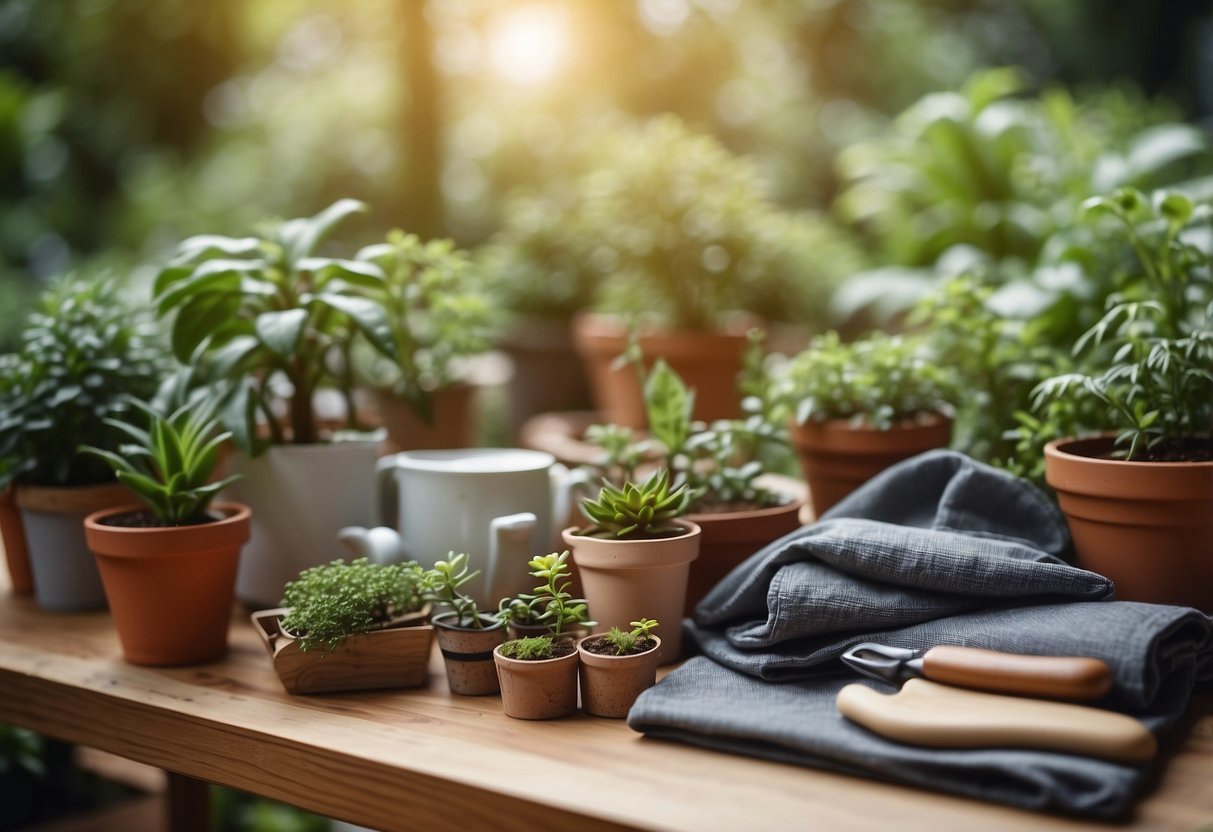
Selecting the best material for your garden sail is crucial for both function and look. You need to consider the fabric type and the material’s durability to ensure your shade sail lasts long and meets your needs.
Fabric Options
Different fabrics offer various benefits for shade sails. The most popular choice is high-density polyethylene (HDPE), known for its strength and UV protection. It’s also mold and mildew-resistant, making it suitable for outdoor use.
Another option is polyester canvas. It provides excellent UV protection and comes in various colors. It’s less breathable than HDPE but is effective for blocking more sunlight.
For a premium choice, PVC-coated fabric is highly durable and waterproof. It’s pricier but offers excellent longevity and UV protection, making it perfect for areas with harsh weather.
Consider your specific needs and climate when choosing the fabric. Each type has its own advantages, so think about what matters most for your garden space.
Durability Considerations
Durability ensures your investment lasts. Look for shade sails with reinforced seams, as seams are often the first point of failure. Reinforced edges and corners can significantly extend the life of your shade sail.
Next, consider the GSM rating of the fabric. Common ratings range from 160 to 260 GSM. A higher GSM generally means thicker fabric, leading to better durability and UV protection.
Materials like stainless-steel hardware for mounting are essential for resisting rust and corrosion. This ensures secure and lasting installation, especially in humid or coastal areas.
Ensure you select materials that can withstand your local weather conditions. Strong winds, heavy rain, or intense sun all affect the lifespan of your shade sail, so choose accordingly.
Installation Tips

When setting up garden sails, you need secure anchoring methods and optimal placement for best shading and stability. Both aspects are crucial for an effective and long-lasting installation.
Anchoring Methods
To ensure your garden sail stays securely in place, use sturdy anchoring methods. You can anchor shade sails using posts, walls, or existing structures. If using posts, dig holes at least 3 feet deep and 1.5 feet wide. This depth gives stability against wind and weight.
Use concrete to set posts in place, filling the bottom of the hole with 2 inches of pea gravel or crushed stone. This helps with drainage. If attaching to a wall, use heavy-duty brackets and ensure all connections are facing towards the middle of the sail and securely fastened.
For additional security, consider using turnbuckles or metal cable loops. These allow for easy tension adjustments and reduce sagging. Always double-check all connections before finishing.
Optimal Placement
Placement is key to maximizing shade and stability. Start by identifying the areas you want shaded throughout the day. Observe how the sun moves across your garden.
Lay the sail out on the ground in the area you plan to cover. This gives you a clear idea of where each corner will attach. Ensure there is enough space around each anchor point.
Avoid areas with obstacles like tree branches or power lines. These could interfere with the sail or cause damage. Additionally, try angling your sail to allow water runoff in case of rain.
You can overlap sails for more coverage, but make sure not to create wind traps. Proper spacing and positioning will help maintain a strong and secure setup.







